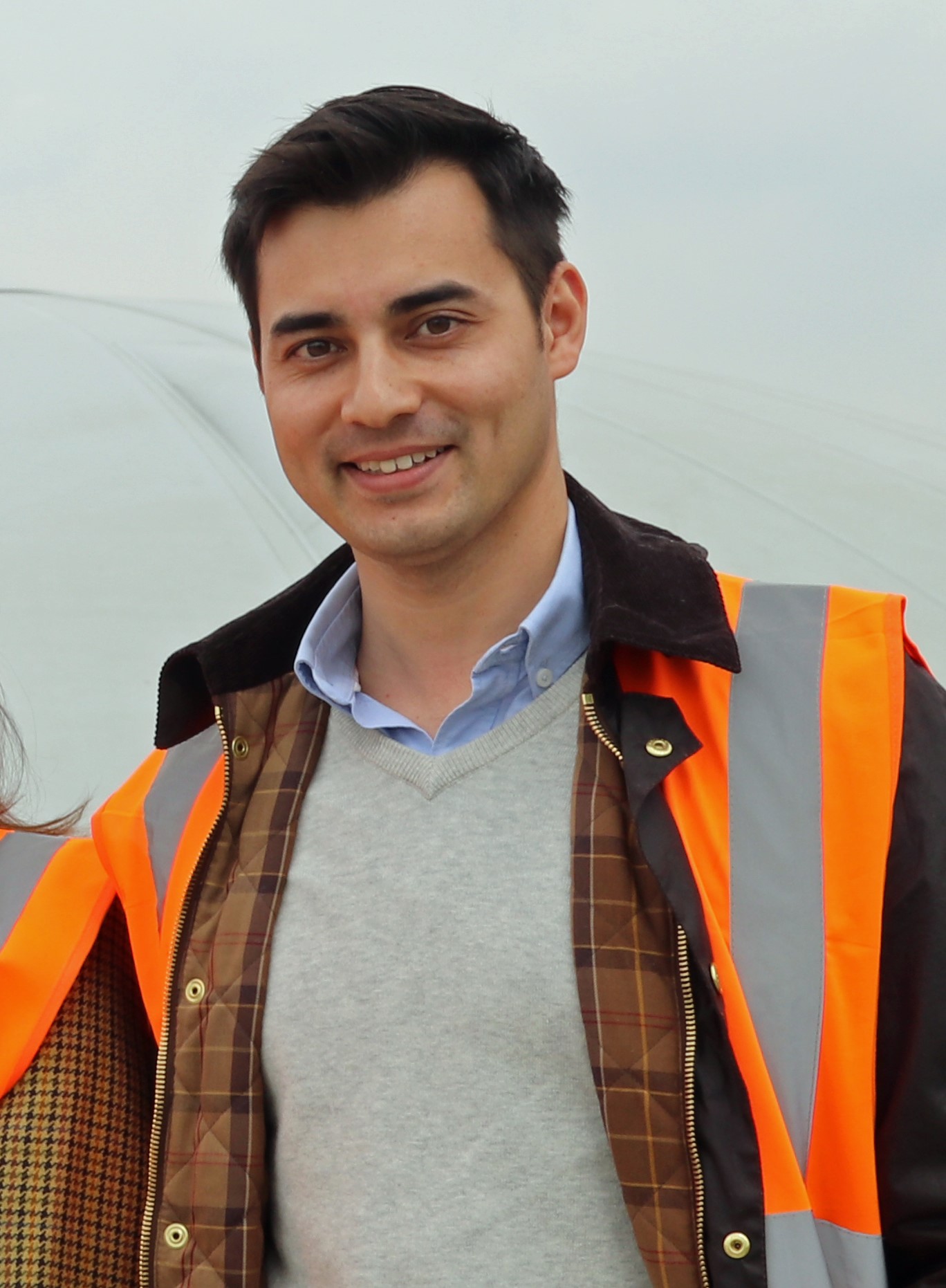The Environment Bill – which sets out to ‘transform the way we manage our waste’ – will have huge implications on food waste for both businesses and consumers.
Of course, we should aim to reduce the amount of food we waste, and in fact, food waste levels in the UK successfully fell by 480,000 tonnes between 2015 and 2018[1]. As a business, we fully support the implementation of the waste hierarchy and advocate for businesses and consumers to redistribute food wherever possible.

However, not all food waste can be avoided, and it is essential that this unavoidable waste is managed appropriately. Tackling this problem, the transformative Environment Bill demonstrates a commitment to roll out separate food waste collections for all households, businesses, and organisations across the country. This is good news for the environment. By improving food waste collections, we can all play a role in ensuring products that would normally end up at incineration or landfill sites are causing the least amount of damage by efficiently recycling them in the most environmentally beneficial way available: Anaerobic Digestion (AD).
At Bio Collectors, we firmly support the introduction of separated food waste collections and are confident of the wide-ranging benefits this will introduce. Defra’s consultation on household and business recycling consistency illustrates the impact this will have on the industry. It found that if all local authorities provided kerbside food waste collection, the amount collected would increase by 1.35m tonnes by 2029, reducing greenhouse gas emissions by an estimated 1.25 million tonnes per year[2]. While there have been some concerns raised about the industry’s ability to respond to such an increase, we know that it is primed and ready to process increased collections. With this in mind, the proposed transition times and exemptions included in the Bill will only result in a further delay in this much-needed step towards efficient waste collection and recycling.
A time for change
While the Environment Bill is aptly described as the ‘biggest shake-up of green regulation in decades’, the changes need to be implemented quicker. We know that the industry is willing and waiting to move to segregated food waste collections. And, while there is some validity to concerns raised over the need for a transition period, extending the rollout to 2030/31 for those authorities with long-term contracts in place will only serve to exacerbate the problem in the meantime, leaving many authorities, businesses and consumers in a state of limbo. Given that the bill began in 2018, we believe urgent action is needed and short term targets introduced to begin to solve this ongoing challenge.
The alternative to landfill
So how can the Government ensure that as segregated food waste collections are implemented, that they are treated in the most efficient and environmentally friendly manner? We know that segregated food waste collections will contribute to reduced emissions. However, to ensure this the process in which food waste is treated is key. When food waste is sent to landfill, it rots and emits methane into the atmosphere – a powerful greenhouse gas. Separated food waste collections are integral to the Bill’s goal of eliminating food waste from landfill by 2030[3] as the implementation will not only improve food waste recycling and composting rates across the country, but also divert waste from being incinerated or landfilled.
How? As aforementioned, segregated food waste collections will significantly reduce the nation’s carbon footprint by enabling the waste to be converted into valuable energy and digestate. However, this can only be achieved if we dispose of our waste using truly circular waste removal methods such as Anaerobic Digestion (AD) – the Bill’s recommended course of treatment. To illustrate just how polarised these waste disposal methods are: waste landfilling has the highest carbon footprint at 193 kg CO2 per tonne of waste treated whilst AD has the lowest with a net-negative carbon footprint of –40 kg CO2 equivalents per tonne (eq./t) [4].
The potential challenges of mandatory food waste collections
In the UK alone, 6.7 million tonnes of food are wasted every year. This totals a cost of £10.2 billion, the equivalent of £250-£400 per household, per year[5]. With millions of tonnes of additional municipal and potentially commercial food waste needing to be effectively disposed of due to the Bill, some have questioned if the country’s current infrastructure will be able to cope with the increased demand.
“In the UK alone, 6.7 million tonnes of food are wasted every year,” – Dan Purvis
But these concerns are unfounded. Defra statistics show that the total capacity of facilities licensed to treat food waste exceeded six million tonnes in the UK last year (see letsrecycle.com story). In fact, capacity for food waste recycling has nearly doubled over the past decade as part of targeted efforts to reduce biodegradable waste heading to landfill, according to a report published this year by environmental consultancy Footprint Services using Defra statistics[7].
As the preferred choice for food waste recycling, AD has seen some of the biggest growth. Since 2011, its capacity has nearly tripled, rising from just under 1.4 million tonnes to nearly 4.5 million tonnes. Because of this, the technology has now replaced In-Vessel Composting (IVC) as the most common means of treating food waste.
The cost implications
More plants mean increased competition for the feedstock from councils and businesses. This has resulted in the average contracted and gate fee prices seeing a steady decline since 2013, which is positive for those worrying about their bottom line (see letsrecycle.com story). Plus, the WRAP Gate Fees Report 2020 found that AD was the most cost-effective means of food waste treatment when compared to IVC, Energy from Waste (EfW) and Landfill[6].
Taking the cost savings even further, another study by WRAP found that 99% of companies – spanning grocery, retail and hospitality – had a net positive financial return after investing in food waste management[7]. And at Bio Collectors, we are confident that AD will give businesses a cost-saving in waste disposal.
The future of food waste
Whilst tackling the current food waste issue may seem like a huge challenge, we are confident that the Environment Bill will help to set a path for a more sustainable future. By introducing segregated collections and turning to AD, we will see a modern, cost-effective and environmentally efficient solution used to recycle food waste. There is no denying that the time to act is now, and we encourage local authorities, businesses, and consumers alike, to take the necessary steps to make this a reality.
For more information on how Bio Collectors can help your business recycle your food waste efficiently, visit: https://www.biocollectors.com/
[1] https://deframedia.blog.gov.uk/2020/02/10/household-food-waste-to-be-collected-separately-by-2023-and-50000-city-trees-to-be-planted-in-urban-tree-challenge-fund/
[2] https://deframedia.blog.gov.uk/2020/02/10/household-food-waste-to-be-collected-separately-by-2023-and-50000-city-trees-to-be-planted-in-urban-tree-challenge-fund/
[3] https://deframedia.blog.gov.uk/2020/02/10/household-food-waste-to-be-collected-separately-by-2023-and-50000-city-trees-to-be-planted-in-urban-tree-challenge-fund/
[4] https://www.sciencedirect.com/science/article/pii/S1876610219311324
[5] https://www.cheaperwaste.co.uk/blog/food-waste-the-complete-2020-guide/
[6] https://wrap.org.uk/sites/default/files/2021-01/Gate-Fees-Report-2019-20.pdf
[7] https://wrap.org.uk/resources/report/business-case-reducing-food-loss-and-waste











Subscribe for free